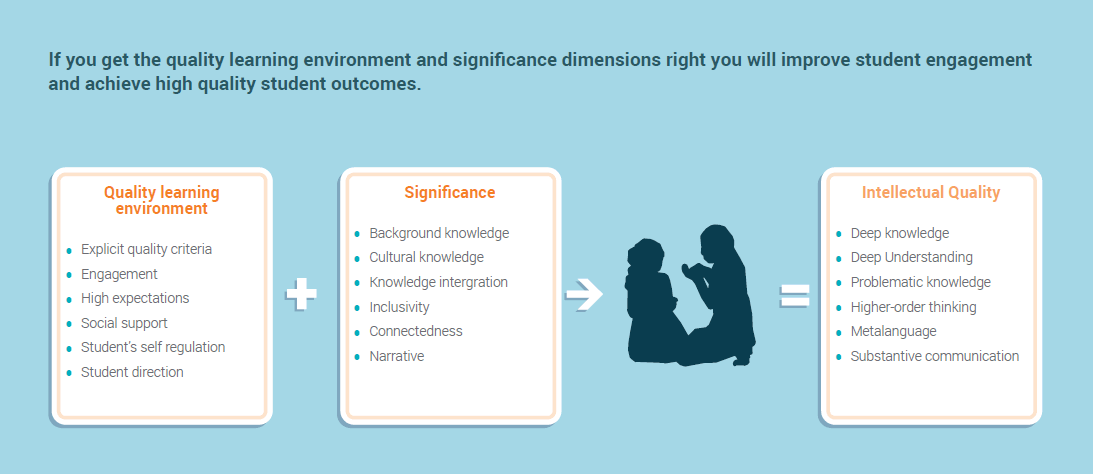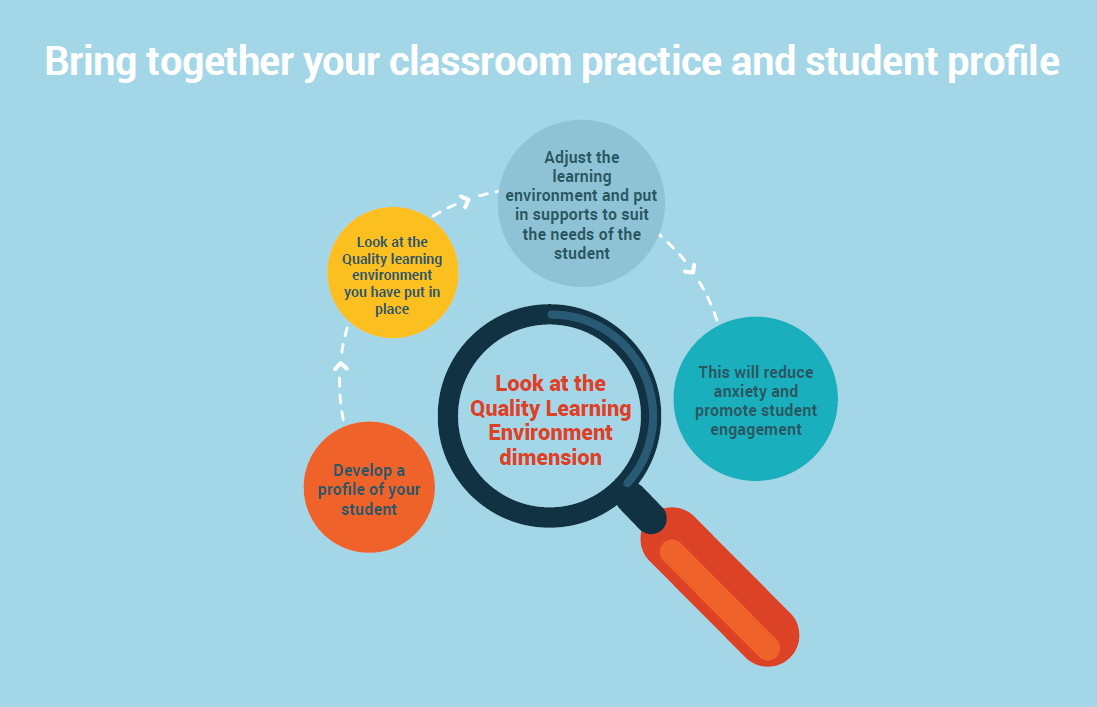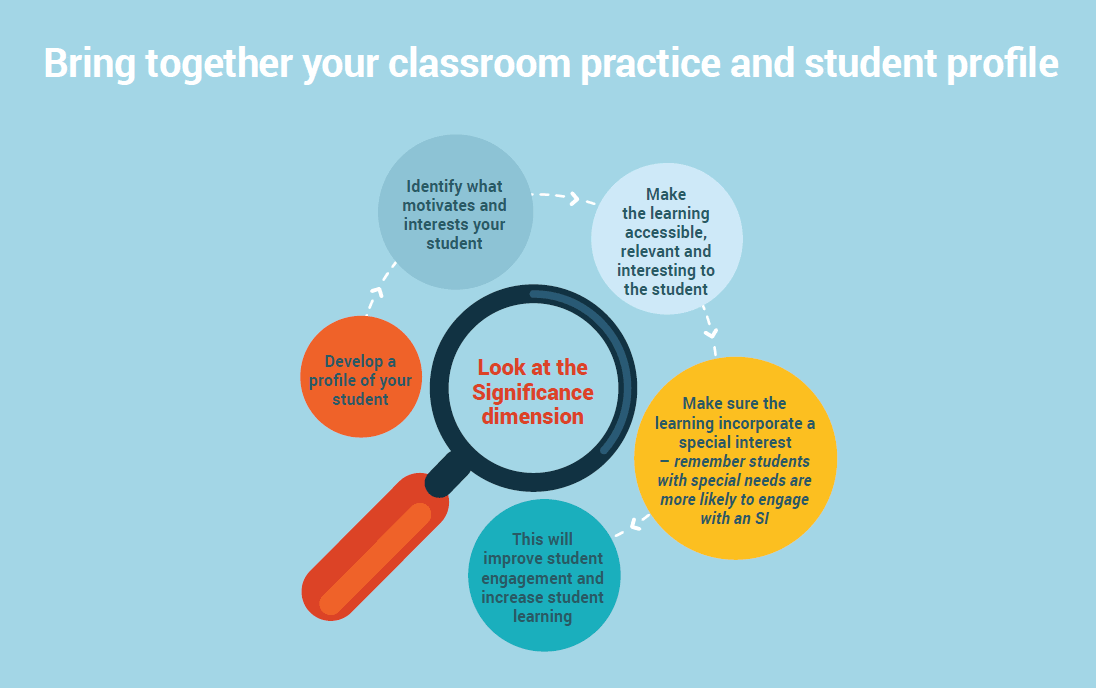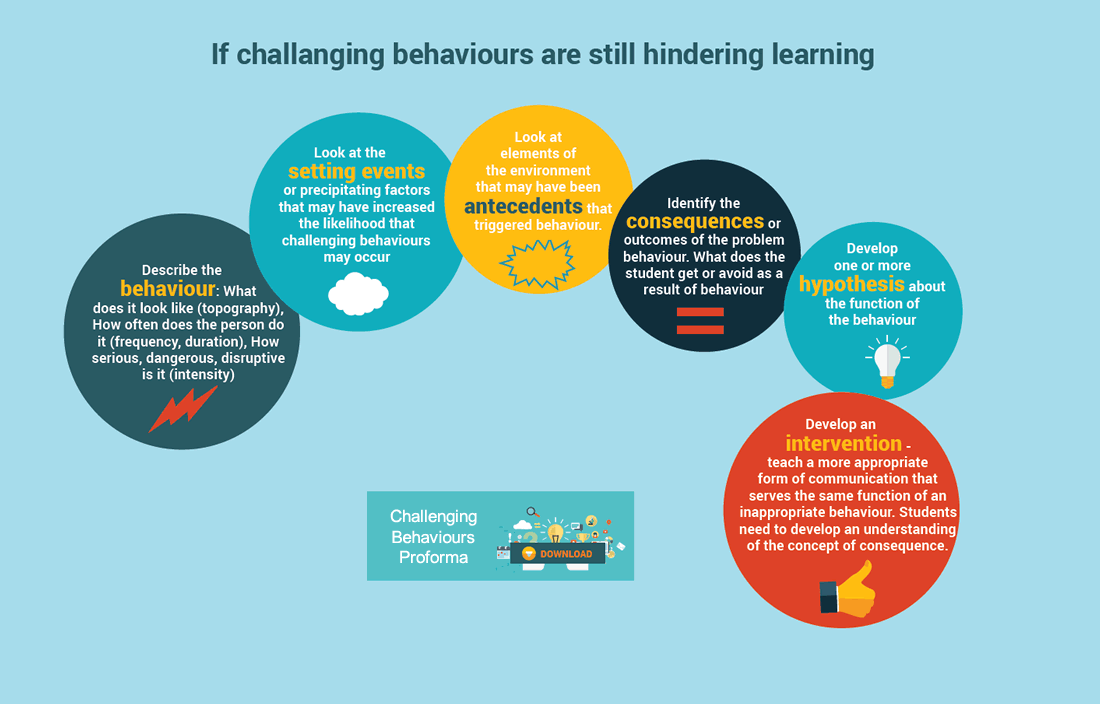Practical Suggestions for Addressing Behaviours
Teachers encountering a student with Autism Spectrum Disorder (ASD) for the first time can find the experience confronting. When trusted methods of settling everyone else in the class don’t work, and as the behaviours of the student with autism spectrum disorder become more and more extreme, frustration can soon set in..
It’s not uncommon for exasperated teachers to find themselves saying things like:

You already have the building blocks for success. Remember your Quality Teaching Framework
Don’t forget the basic facts around ASD
Every child with autism is different; they are all unique individuals. But there are some common underlying issues around learning and behaviour for children with autism spectrum disorder that your student will be experiencing to some degree or another.
They will most likely have (in some combination):
- A severe communication disorder.
- Auditory problems.
- Ritualistic tendencies.
- Resistance to change.
- Difficulties with new situations.
- Difficulty with transitions
Also, students with autism will:
- Learn in chunks.
- Like rituals and routines.
- Have difficulty learning new routines.
- Have difficulty with change and transition.
- Have trouble analysing and synthesizing.
- Lack the ability to generalise skills.
- Have their very own personal idiosyncrasies.
Students with autism often experience considerable anxiety. This can lead to an escalation in behaviour. They are telling you that there is something amiss for them in their environment.

Step 1:
Take stock of what you have to build on
Remember, you already have all the tools, skills, knowledge and experience you need to succeed.Your Building Blocks for Success
- You understand the Disability Standards for Education and what they require of you.
- You’re committed to ensuring learning is always rigorous, meaningful and dignified.
- You know the three dimensions of the NSW Quality Teaching Framework and use them to shape your classroom practice.
- You know and are already teaching the curriculum.
- You’re well practised at differentiating the curriculum to meet the needs of different students.
- You know what works best for you to achieve the best possible learning outcomes for your students, in your classroom, in your school, in your community.

Step 2:
Get to know your student
All your students are unique individuals with their own likes and dislikes, special interests and a specific set of needs.Create a Student Profile
- Write up everything you know about your student – gather copies of reports and health care plans, talk with former teachers and your principal, talk with the child’s parents or carers.
- You want to know who the student is and how they learn, what they like, what they do not like, what upsets them, how they communicate etc.
- Trust your own observations – students with disabilities often struggle to communicate but you can learn a huge amount about them and how they will learn best by paying close attention to the ways they behave and what they react to in different situations (remember all behaviour is communication)
- Make it a living document – keep coming back to your profile to up-date and add to it as you gain a deeper and deeper understanding of the child and what works for them.
- Example of a student profile document

Step 3:
Bring together your classroom practice and your student profile
Determine what adjustments and supports you need to put in place to stabilise the environment for them and facilitate learning. Adjustments and supports for a child with autism spectrum disorder will be decided by giving particular attention to four main factors: physical environment, routines, communication, and socialisation.Make Adjustments for Two Key Dimensions
Use this knowledge to address students’ needs in relation to these two dimensions. This will improve student engagement and increase student learning(intellectual quality)- Quality Learning Environment – what adjustments and supports can you put in place to help reduce anxiety, increase independence and promote engagement for your student?
- Significance – how can you make learning meaningful and relevant, use the student’s strengths, and ensure that she or he is appropriately challenged and is fully engrossed?
- Use all resources available to help you ensure students are achieving with the highest level of independence
- Find our more about what Adjustments you can make
In light of your student’s particular likes, dislikes, needs, obsessions, anxieties, skills, strengths etc (as recorded in their profile) consider:
- The physical layout and set-up of the classroom/space.
- The activities/lessons planned throughout the day.
- Allocating space for specific activities.
- Having necessary equipment close to where an activity will take place.
- Reducing clutter to reduce distraction.
- Reducing irrelevant information.
- Labelling key information/resources (using pictures if necessary).
- Sensory needs.
For a child with autism every day can feel like starting a blank page and beginning anew. In some cases children with autism may rely entirely on the familiarity, consistency and security of routines to make the world manageable for them.
No learning can occur when a child is overwhelmed and anxious about what’s being expected of them. Routines support your student to remain calm and allow for maximum engagement. What’s more, children with autism are naturally motivated to repeat routines. Routines themselves, then, become reinforcing and can be actively used to teach skills and tasks.
Routines are any tasks or actions done according to a set pattern or sequence. Larger patterns can be broken down into a number of smaller patterns to make them understandable and recognisable to a child with autism, and vice versa.
This is a visual description of Routines (Download PDF)
Types of routines include:
- Task sequences (PDF example).
- Activity sequences (PDF example).
- Daily schedules (PDF example).
- Weekly schedules (PDF example).
- Monthly calendars (PDF example).
Routines start from the moment a child gets up in the morning, to arriving at school and entering the classroom. Creating a schedule helps a child with autism spectrum disorder see the sequence of familiar, routine activities that will occur in a day. It also gives the child stages to work towards and helps them anticipate transitions, which can be particularly difficult for a child with autism.
Schedules don’t have to be exactly the same every day, but communication is critical – students have to be made aware of what’s going to happen at every stage of the day. The more effectively you are able to communicate the sequence of activities that will make up a child’s day, or week, or even month the more confidence they will gain and the more you enable them to operate independently in the classroom.
Many students with ASD dislike change and rely on routine. Visual supports can be a good way of introducing change and helping during transition.
Don’t think that this means that everything should remain exactly the same all the time. In fact, it’s better for the child that there is change and variety (as there is in the world). Maintaining calm for your student means helping them understand changes happening around them and supporting them as they transition through them.
Communicating is a seven step process:
- Establishing or shifting attention
- Following rapidly changing stimuli
- Taking in information
- Processing information
- Storing information received
- Retrieve other information
- Sending information
In communicating with others we do many things at once, without thinking a great deal about it.
Typically, most of us focus on the seventh step only, skipping the other six because they seem to happen automatically. Teaching communication in the classroom however, when accommodating a student with autism, requires you to actively teach all seven steps.
To do this you need to be aware of both how your student is expressing themselves and how they are receiving information in the classroom.
To best support a child with autism spectrum disorder you simply need to make sure that this does not get lost or overlooked, you need to be actively and deliberately teaching socialisation. You also need to make sure the skills you’re teaching are generalised across all environments as much as possible.
Importantly, you need to be aware that while their peers experience more positive social interactions than negative for children with autism this is reversed, they usually experience a significantly higher number of negative social interactions than positive.
Your goal is to do all you can to turn this around for your student. You’ll achieve this by teaching meaningful, effective social skills and teaching behaviours that will serve to increase the ratio of positive interactions they experience. Be careful that you don’t, in an effort to increase social interactions, unwittingly subject a child to negative experiences – it will only lead to confusion.
Are you still experiencing impending clouds around behaviour?
All of us carry around with us our own personal weather system. Are you radiating sunshine today? Or has something happened that means a storm cloud’s hovering above you?
Your student with autism spectrum disorder is exactly the same. And just as we all watch for weather changes outside, you can make things easier for your student, and yourself, in the classroom by learning to read their personal barometer. By staying a step ahead, you can even head off a situation before a thundercloud explodes into a full on meltdown.
Know what will upset your student and be aware of the setting events (precipitating factors) that increase the likelihood of challenging behaviours being triggered.
Three categories of setting events can affect a child’s mood:
In each category setting events may come up at different times of the day, in different places and in relation to different activities. They may not be immediately obvious, and they may be multiple. The trick is to identify patterns – when they happen and when they don’t.
As you learn them, develop strategies to neutralise setting events in advance or help your student prepare for and deal with them. You’ll discover that many a squall can be dispersed by making a few quick and simple adjustments. Of course, larger, more complex weather systems need a more considered response but, over time, you’ll find that these too can be effectively managed.







